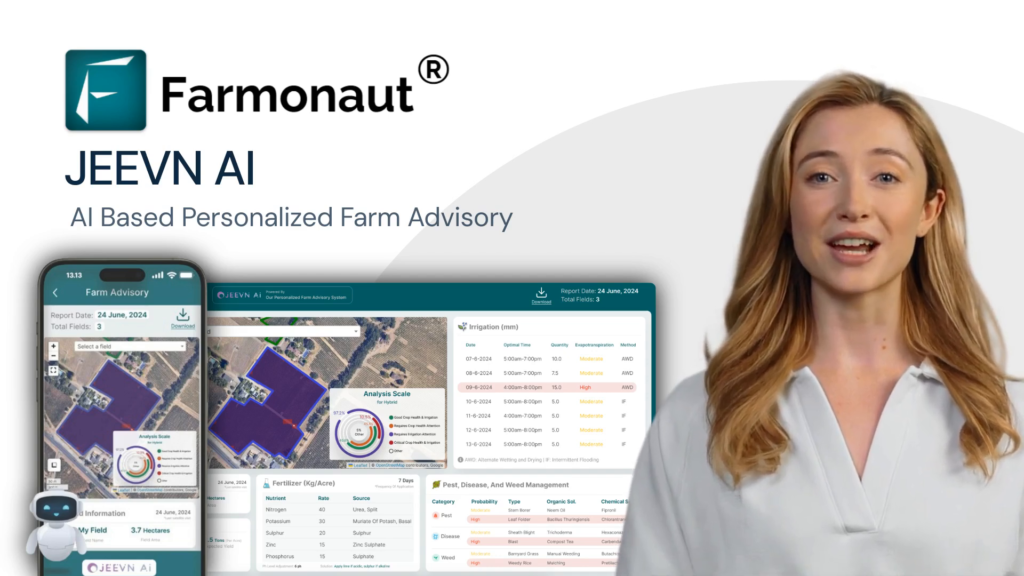Bridge Farm Loans & Arkansas: Agricultural Bridge Solutions for 2025
“In 2025, Arkansas farmers use bridge loans to cover cash flow gaps amounting to over $200 million annually.”
Introduction: Bridge Farm Loans & Arkansas in 2025
The year 2025 marks a period of significant change and opportunity for agriculture across the United States, especially in Arkansas, a state where farming remains central to the economy. Arkansas is known for its robust agricultural sector, producing large quantities of row crops like rice, soybeans, corn, and cotton. Amid fluctuating market conditions, unpredictable weather patterns, and rising input costs, bridge farm loans and agricultural bridge solutions have become essential financial tools for farmers struggling with cash flow gaps and short-term financing challenges.
Within this context, understanding these agricultural bridge loans—how they work, their benefits, risks, and where to access them—empowers Arkansas farmers to sustain productivity and resilience, even as challenges intensify across the farming landscape. This comprehensive guide explores bridge farm loans in detail, focusing on Arkansas in 2025 and how innovative financial tools and technology, including those from Farmonaut, can help safeguard farm operations against today’s uncertainties and tomorrow’s unknowns.
Understanding Bridge Farm Loans: Agricultural Solutions for Cash Flow Gaps
Bridge farm loans, often referred to as agricultural bridge loans, are short-term, high-impact financing products designed to address pressing cash flow needs faced by farmers. Unlike traditional farm loans, bridge loans are not intended for long-term projects but instead serve as immediate capital infusions during critical periods.
- Purpose: Bridge gaps between outflow (expenses) and inflow (income) during unpredictable or seasonal cycles.
- Term: Shorter durations—typically ranging from a few months up to one year.
- Security: Often secured against farm assets, anticipated crop yields, or future revenue streams.
- Usage: Funds can be deployed urgently, such as for buying seeds, fertilizer, paying for equipment maintenance, or covering labor costs before actual income is received from crop sales or subsidies.
Bridge loans function as critical “bridges” when funds are unavailable but urgently needed, giving farmers breathing room to navigate unforeseen events or take advantage of timely market opportunities.
The Critical Role of Bridge Loans in Arkansas’s Agricultural Landscape
Arkansas is not only a top producer of rice, soybeans, corn, and cotton in the United States, but agriculture also remains a cornerstone of its economy, providing employment and supporting rural communities. However, this sector continuously faces volatile market conditions, shifting weather patterns, and rising input costs—from seed prices to labor salaries.
These dynamics often create mismatches between when farmers incur expenses and when they actually receive income, either from crop sales or government subsidies. For example:
- Farmers must pay for seeds, fertilizers, labor, and equipment maintenance at the start of the planting season, months before they are able to sell their crops.
- Weather events like droughts, floods, or unseasonal temperature changes can delay harvesting or cause partial crop failures, postponing income further and increasing reliance on short-term financial tools.
- Market price volatility means income from crop sales can fluctuate, sometimes requiring adjustments in operational plans mid-season.
In such a volatile environment, bridge farm loans offer Arkansas farmers the flexibility to:
- Cover essential costs during critical growing periods
- Sustain operations without having to liquidate assets or reduce workforce capacity
- Invest in technology upgrades to improve productivity and resilience against future disruptions
How Do Bridge Farm Loans Work?
Bridge loans in agriculture serve as temporary financing gaps—they are not intended for long-term debt, but for resolving short-term needs. Here’s a simplified breakdown:
- Application & Assessment:
- A farmer identifies a cash flow gap, such as needing money for seeds while awaiting a subsidy or delayed crop sales.
- The farmer applies for a bridge farm loan through a local bank, credit union, or Farm Credit association.
- The lender assesses risk based on expected crop yields, weather data, farm assets, and past performance.
- Approval & Disbursement:
- If approved, funds are released quickly (sometimes within one week), as these loans are designed to provide immediate capital.
- The loan is secured—meaning the lender may take a lien on equipment, land, or expected revenue streams.
- Repayment:
- The farmer repays the loan within the agreed terms (often less than 12 months), typically after the harvest or once a subsidy arrives.
- Interest rates are slightly higher than traditional loans due to increased lending risk and shorter timelines.
Farmers, lenders, and financial institutions can leverage real-time monitoring and data-driven farm management via Farmonaut’s web and mobile platforms. These tools integrate the latest satellite, AI, and blockchain technologies to optimize crop monitoring and support loan verification and insurance processes in Arkansas agriculture.
Where to Access Arkansas Farm Loans & Agricultural Bridge Loans
Farmers in Arkansas benefit from a range of credit sources for bridge loans:
- Local banks and credit unions with dedicated agricultural lending teams
- Farm Credit Associations, which understand the unique cycles and risks inherent in farming
- Government Programs:
- The USDA’s Farm Service Agency (FSA) offers operating and production loans, sometimes structured as bridge loans with favorable terms and lower interest rates than commercial offerings.
- Many Arkansas state initiatives continue to support agricultural lending through grants or loan guarantees.
Financial institutions and government programs review specific farm factors, including:
- Soil and land quality
- Crop yields and history
- Weather exposure and climatic risks
- Market outlook for specific row crops (rice, soybeans, corn, cotton)
Farmonaut’s satellite-driven insights empower lenders and institutions with real-time data for bridge loan verification, providing accurate, up-to-date overviews of farm productivity, acreage, and historical outputs. This speeds up disbursement and reduces the risk of fraud or estimation errors for Arkansas farm loans.
For developers seeking to automate access to satellite-based agricultural data for asset verification and farm loan underwriting, Farmonaut offers a powerful API. Full API use cases and documentation are available here for streamlined farm data integration in Arkansas lending workflows.
Key Benefits and Challenges of Agricultural Bridge Loans
Benefits of Bridge Farm Loans
- Timely Access to Capital: Enables farmers to cover immediate cash needs without disrupting ongoing operations.
- Maintains Productivity: Prevents interruptions in planting, harvesting, or livestock management caused by cash shortfalls.
- Avoids Liquidation: Farmers do not have to sell equipment, land, or livestock in response to cash flow gaps.
- Flexibility: Used for any farming purpose, from input purchasing to emergency repairs.
- Enhanced Resilience: Helps farmers manage risk during unpredictable market and Weather events.
- Quick Approval: Unlike traditional loans, bridge loans have faster approval and disbursement timelines—vital during time-sensitive seasons.
- Supports Technology Adoption: Enables farmers to invest in new technology, like satellite monitoring/AI-driven decision tools for better yield management.
Challenges & Risks of Bridge Farm Loans
- Repayment Risk: Requires timely repayment, which may be jeopardized by adverse Weather or further Market shocks.
- Higher Interest Rates: Typically higher than traditional loans (to compensate for increased risk and shorter duration).
- Asset Security: Loans are usually secured by physical or anticipated assets; default could risk farm equipment or land ownership.
- Short-Term Focus: Bridge loans solve immediate gaps but do not replace the need for long-term financial planning.
- Potential for Over-Reliance: Using bridge loans repeatedly, without parallel investments in operational efficiency or risk mitigation, may lead to longer-term financial stress.
“Agricultural bridge financing in Arkansas supports over 30% of farmers facing seasonal market challenges each year.”
Estimated Impacts of Bridge Farm Loans vs. Traditional Agricultural Loans in Arkansas (2025)
| Financing Type | Estimated Approval Time (Days) | Estimated Interest Rate (%) | Typical Loan Term (Months) | Cash Flow Flexibility | Best Used For |
|---|---|---|---|---|---|
| Bridge Farm Loan | 7 | 7.5 | 12 | High | Market Gaps, Input Costs, Weather Delays |
| Traditional Agricultural Loan | 30 | 6.5 | 36 | Low | Equipment Purchase, Land, Infrastructure |
Arkansas Agriculture Market Challenges & the Need for Bridge Solutions in 2025
Arkansas’s agriculture sector, while strong, is not immune to the pressures facing farmers nationwide in 2025. Let’s break down the persistent challenges and why bridge farm loans and agricultural bridge products are vital:
1. Fluctuating Market Conditions
- Commodity prices for rice, soybeans, corn, and cotton are increasingly volatile, influenced by global supply-demand, trade policy shifts, and energy prices.
- Opportunities for premium sales may arise unpredictably, requiring rapid investments just before harvest or shipment.
2. Unpredictable Weather Patterns
- Climate events (droughts, floods, unseasonal frosts) can delay planting and harvesting cycles, damaging cash flow forecasts and increasing dependence on short-term funding.
- Satellite monitoring and real-time advisory—from providers like Farmonaut—add vital tools for early warning and mitigation, but initial investments may require short-term loan support.
3. Rising Input Costs
- Labor, fuel, seed, fertilizer, and maintenance costs continue to outpace inflation, requiring larger cash outlays at the start of each season.
- Bridge loans empower farmers to meet higher upfront expenditures without compromising their operational capacity or having to delay critical stages in the crop cycle.
In summary: Bridge farm loans bridge the “valleys” of cash flow between investment and income in Arkansas agriculture—providing a vital line of support amid uncertainty.
Future Trends: Data, Technology & Farmonaut’s Role
By 2025 and beyond, the landscape of Arkansas farm loans and agricultural bridge loans is rapidly evolving, thanks to advanced technology and new forms of risk assessment:
- AI & Satellite Data: Lenders increasingly use satellite imagery and data-driven analytics to monitor farm health, predict yields, and verify asset quality. This precision reduces default risk for lenders and opens financing access for more farmers.
- API Integration: Platforms like Farmonaut enable banks to automate loan eligibility verification, asset tracking, and production forecasts for Arkansas farms in real time.
- Blockchain Traceability: Farmonaut’s traceability solutions add transparency to crop supply chains, making Arkansas agricultural products more competitive, and further supporting farm loan approvals with secure documentation.
- Environmental Compliance: Carbon footprinting tools help Arkansas farmers adopt climate-smart practices and demonstrate sustainability—often a requirement for accessing modern bridge loans and government grants.
For Arkansas farmers seeking to improve loan and insurance accessibility, Farmonaut Crop Loan & Insurance Verification Services let financial institutions validate claims and farm health instantly through satellite-aided data, thus expediting bridge loan processing and payout timelines.
Farmonaut’s Large Scale Farm Management Solutions offer integrated monitoring tools for Arkansas crop managers handling multiple fields. These enhance efficiency and operational oversight, supporting better cash flow planning and helping avoid unnecessary bridge loan reliance.
Explore Farmonaut Fleet Management to optimize vehicle and equipment usage across wide Arkansas farmlands. Efficient fleet use minimizes costs, supports timely planting/harvesting, and reduces dependence on frequent short-term financing by maximizing every input dollar.
Farmonaut Agricultural Technology Solutions for Farmers
As we move deeper into 2025, advanced technologies are reshaping every aspect of Arkansas agriculture. At Farmonaut, we are dedicated to providing affordable, accessible satellite-driven insights for every Arkansas farmer—from smallholders to large-scale operators—empowering them to make data-driven decisions, build resilience, and reduce loan risk.
- Satellite-Based Crop Monitoring: Monitor every field for vegetation health, soil moisture, and weather trends using Farmonaut’s web or app platforms. Early warnings help guide funding needs and bridge loan timing.
- AI-Powered Advisory (Jeevn AI): Get real-time recommendations tailored to Arkansas’s row crops (rice, soybeans, corn, cotton), including disease alerts and ideal harvesting windows, maximizing productivity and loan ROI.
- Environmental Tracking: Use carbon footprint monitoring to comply with latest regulations, secure sustainability-linked bridge loans, and access new Market opportunities.
- Traceability & Fleet Management: Document Arkansas product journeys securely and optimize machinery or vehicle use during high-pressure Market periods, reducing lending costs and risks.
Farmers, businesses, and financial institutions in Arkansas can get started today with flexible Farmonaut subscriptions—tailored to individual, business, or government needs.
FAQ: Bridge Farm Loans, Arkansas Farm Loans & Agricultural Financing in 2025
What is a bridge farm loan?
A bridge farm loan is a short-term, immediate financing tool designed to help farmers in Arkansas and beyond manage cash flow gaps during critical times, such as between harvesting and income receipt or before government subsidies are disbursed. These loans are typically repaid within a year and secured against farm assets or anticipated yields.
How are bridge farm loans different from traditional agricultural loans?
Bridge loans are for quick, short-term needs (days to months) with faster approval and higher flexibility, whereas traditional agricultural loans have lower interest, longer terms (years), and are intended for equipment purchases, land acquisition, or major capital investments.
Why are bridge loans important in Arkansas agriculture?
Due to the highly seasonal nature and unpredictable market/weather impacts on Arkansas farming (especially for row crops like rice, soybeans, corn, and cotton), bridge loans help farmers maintain operations and cover essential expenses during periods when income is delayed or uncertain.
Where can Arkansas farmers get bridge loans?
Local banks, credit unions, Farm Credit associations, and government programs such as USDA FSA offer bridge loan products designed for agricultural cash flow support. Additionally, leveraging technologies like Farmonaut helps with loan verification and risk assessment.
Are bridge loans risky?
They can be, since they rely on timely repayment, which may be disrupted by further market or environmental issues. However, they are powerful tools for those who understand their financial cycles and use them as part of a broader farm management strategy.
How can technology help reduce bridge loan risk?
Real-time satellite monitoring and AI-based advisory systems—such as those offered through Farmonaut—help forecast yields, detect crop stress early, and improve financial planning, reducing default risk for both lenders and farmers.
Which Arkansas crops are most supported by bridge farm loans?
Bridge loans are especially vital for row crops like rice, soybeans, corn, and cotton—crops common in Arkansas where market cycles, Weather risks, and input costs create substantial cash flow gaps at different periods of the growing season.
Conclusion: Bridge Loans—Securing Arkansas’s Agricultural Future
In 2025 and beyond, as the Arkansas farming sector continues to face significant cash flow and market challenges, bridge farm loans and agricultural bridge solutions remain more vital than ever. These short-term, flexible loans empower farmers to navigate unforeseen events, invest confidently through uncertainty, and seize new opportunities without risking their long-term viability.
In summary:
- Bridge farm loans cover urgent financing needs, supporting cash flow cycles for Arkansas’s leading agricultural producers.
- Farmers benefit from fast approvals, flexible usage, and resilience against unpredictable weather and market conditions.
- Institutions and lenders increasingly utilize advanced data, satellite imagery, and AI-powered insights—like those from Farmonaut—for better risk assessment and expedited lending.
As technology and financial products continue to evolve, and with the support of data-driven tools from Farmonaut, Arkansas farmers are better equipped to adapt, innovate, and sustain agricultural productivity for generations to come.
Ready to modernize your Arkansas farm management and optimize your financial planning for 2025? Experience the power of Farmonaut’s satellite-based agriculture solutions today!












